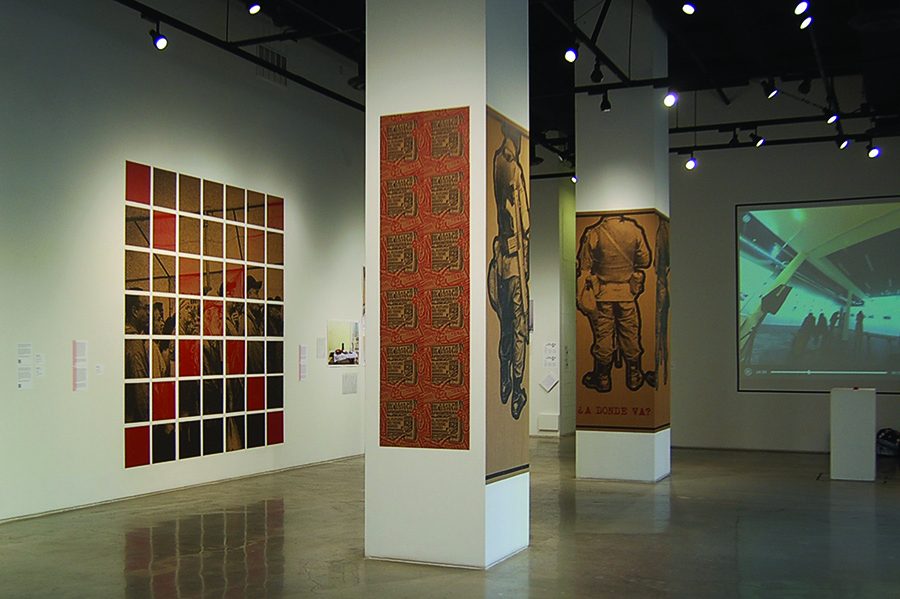The San Diego State School of Art and Design offers four galleries for students and faculty to share their art with the public and the SDSU community.
The gallery located off campus in downtown San Diego has four exhibitions shown a year, each ranging from nine to 12 weeks each. The current exhibition in the downtown gallery opened July 27 and is titled “We Are Here/Estamos Aquí.”
This exhibition features photography as a mode of storytelling and as an agent for social change through images depicting the dynamic social aspects of the U.S. and Mexico border, according to their website.
Downtown gallery director Chantel Paul proposed this idea after noticing a number of photographers looking at the border, migration and farm workers. She wondered how she could highlight the experiences of people interacting with the border.
“What could an exhibition look like that broadens that story and shares personal stories through the images of the border, what the culture of the border is and how people are moving across the border and where they end up,” Paul said.
This exhibition focuses more on photography to show the various border experiences.
“I specifically chose photography because more than any other art form, photography has been used since it was started in the 19th century as a tool for social change and to bring awareness,” Paul said.
Although the exhibition is small, it features various international photographers and artists like Thomas Kiefer, Stefan Falke, Ingrid Hernández and Pieter Wisse.
Kiefer features a photo series titled “El Sueño.”
Kiefer collected, arranged and photographed items he found in trash bins, arranged them and photographed them when he was working as a janitor in U.S. Customs and Border Protections in southern Arizona.
A stand out piece from the series is “La Magnifica,” which is a photo of a prayer written in Spanish on a Motel 6 business card and an English translation written in the white space of the photo.
The exhibition also includes an interactive video where visitors can watch a video but click and drag with the mouse to get a 360 degree view of where it was shot.
The video captures the experiences of transborder individuals as they cross the border, take public transportation, attend work or school and interact with social groups in both the U.S. and Mexico.
Doctorate student Vannessa Falcon works with a local nonprofit AjA Project and collaborated with Borderclick to create the video.
Falcon said she is proud to have an exhibition that shares her experiences as a transborder student and the border culture in general.
“I’ve been very grateful that people like (Paul) have taken an initiative to bring to light these experiences and bring it into an institutional setting, specifically higher education,” Falcon said.
The San Ysidro International Port of Entry in San Diego sees up to 50,000 vehicles and 25,000 pedestrians crossing to the U.S. each day, according to U.S. Customs and Border Protection.
The people crossing to and from the U.S. and Mexico are diverse in age, ethnicity, identity and their frequency of crossing. SDSU serves as one of many homes for some of the transborder individuals that cross the border to attend school and engage in the community.
Paul said she would like people to have a better understanding of the border culture.
“The main goal is empathy, it’s really about the story of what is the culture of the border and who are the people we talk about,” she said.
Falcon shares similar thoughts about the message of the exhibition, especially the cultural relevancy of transborder individuals.
“At the most basic level, have an understanding of this culture and community that exists in the San Diego region, and be aware that transborder people are part of the community and they are people that work in different settings in different institutions in San Diego,” Falcon said.“If it weren’t for ‘Estamos Aquí,’ I wouldn’t be able to tell educators and student affairs professionals ‘Hey you want to learn more about (the transborder) student population? There’s an exhibition.’”
The Estamos Aquí exhibition will run until Sunday, Oct.29. The gallery is free and open Wednesday through Sunday from 11 a.m. to 4 p.m.







